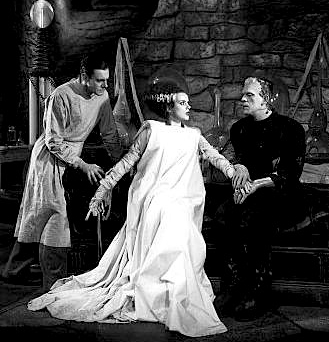Perhaps it was merely the growls of my restless imagination, but after my last set of posts on hallway pitching, I thought I heard some frustrated sighing out there. Oh, you may have been too polite to post a question about it, disgruntled gusters, but I have marvelous powers of perception.
Not to mention projection.
In any case, I sensed your unspoken irk. “But Anne,” I heard some of your psyches muttering in the dead of night, “if the elevator speech is so effective at piquing interest, why SHOULDN’T I just use it as my pitch in my meetings with agents and editors? Why do I need to prepare more than one speech?”
The short answer: so you can be flexible. After all, you never know when — or where — you may end up pitching.
It’s not as though simply memorizing a pitch, be it 3-sentence or 2-minute, is sufficient to prepare a writer for a meeting with an agent or editor who might be interested in the book. (In fact, as reader Jake pointed out last week, a pretty good argument could be made for NOT memorizing either, but reading one’s pitch from a handy piece of paper, index card, etc., to avoid the glassy-eyed, zombie-like delivery that regurgitation of memorized material.)
Besides, as reader Dave pointed out a few days ago, a full-scale pitch is an interactive process, not a speech declaimed to an audience who can only clap or boo at the end. If an agent or editor likes your hallway or full pitch, she’s probably going to ask some questions.
Perhaps — and this comes as a substantial shock to most first-time pitchers — even DURING your pitch.
This is why I’ve spent the last couple of weeks trying to nudge all of you away from the all-too-common notion of the three-line pitch, practiced over and over as if they were lines in a play. If you concentrate too much on the words themselves, and the short amount of time you have to say them, it’s too easy to freeze up when an unexpected question knocks you off script.
Call me zany, but in my experience, helping people learn to talk about their work professionally and comfortably in a broad variety of contexts works far better in practice than ordering people to write, memorize, and blurt a specific number of lines of text.
Hey, I warned you up front that my views are a trifle iconoclastic.
Which makes some of you uncomfortable, I’d wager. “But Anne,” I hear some of you protest, “I can always ADD to my pitch on the fly, but I can hardly subtract from it. So why wouldn’t I be best off just preparing the 30-second version and using it no matter where I’m called upon to pitch?”
Admittedly, a lot of people do use the 3-sentence elevator speech as a pitch; to be fair, it can work, just as hallway pitches work. However, a 30-second pitch leaves quite a bit of a 10-minute appointment unused, doesn’t it?
And why would you trade an opportunity to say MORE about your book for a format that forces you to say LESS?
I have another, more strategic reason for advising you to prepare both a short and a long pitch: not all conferences are equally open to hallway pitching. Especially, I’ve noticed, the ones that charge would-be pitchers per pitching appointment.
Oh, you’ll pretty much always be able to buttonhole an agent or two after an agents’ forum, for instance, or in the lunch line. It’s pretty difficult for conference-organizers to prevent ANY extra-appointment chance encounters between agents and the writers who came to the conference to pitch to them.
However, at some conferences, the organizers do try, apparently. I’ve seen many a conference brochure that featured rhetoric telling attendees that it is ALWAYS rude to pitch outside a formal appointment, for example, or that forbade attendees to switch appointments after their assigned agents announced from a dais that they’re no longer accepting a particular kind of book.
Other conferences offer only a small handful of appointment times on a first-come, first-served basis, so late registrants are left with only the options of hallway pitching or not pitching at all. It’s also not at all uncommon for agents and editors to be whisked away to private parties or hospitality suites, so that they are seldom seen in the hallways for accosting purposes.
Even when the rules and/or schedule do not discourage casual pitching, it can require significant bravery to place oneself at the right place at the right time. Even at fairly inclusive conferences, attendees often report feeling like comparative outcasts, unwelcome at the luncheon tables where the bigwigs hobnob. I’ve been to many a conference where the organizers and invited guests sat on one end of a banquet hall, and the paying attendees on the other.
Heck, I stopped by a conference (which shall remain nameless) last summer where the visiting literati were whisked off their respective airplanes, driven immediately to a party at a local NYT bestselling author’s house for abundant merry-making, and then plied with alcohol so steadily throughout the course of the conference that the following Monday morning, one of the agents e-mailed me from New York to ask what had happened over the weekend. Rumor has it that some of the invited guests did not even show up for scheduled a.m. pitch meetings.
Which, I imagine, played some havoc with those pitchers whose assigned pitchees did not appear.
My point is, writers often pay a lot to attend these conferences, yet find themselves with relatively few pitching opportunities — and not always the ones they expected to have. Sometimes, a writer has to be pretty creative in order to snag those precious few moments for pitching, at least without coming across as obnoxious.
The moral: it’s always a good idea be prepared for many different eventualities.
This is not being pushy; it’s being smart about promoting your work. By preparing to be able to speak about your book in a variety of contexts, social and official both, you can be ready to take advantage of that chance meeting with the agent with whom you found it impossible to make a formal appointment.
In, say, an elevator.
Also, by emphasizing the 3-sentence pitch to the exclusion of all others, I think the standard sources of writerly advice have left first-time pitchers ill-prepared to address those other vital issues involved in a good pitch, such as where the book will sit in Barnes & Noble, who the author thinks will read it, why the target market will find it compelling…
In short, all of the information contained in the magic first 100 words.
Oh, I’m sensing some impatient seat-shifting out there again. “I get it, Anne,” some of you say, rolling your eyes, “you believe that I’ll be happier in the long run if I prepare to be able to give my pitch in a house, with a mouse, in a hat, near a rat, and anywhere else that an agent with a successful track record selling books in my category happens to be. I’m GOING to practice my elevator speech AND my pitch. But I’m hardly going to forget my own name or the title of my book. I DO have social skills — I don’t seriously need to go over how to introduce myself, do I?”
I’m sure that you have social skills that are the pride and joy or your mother under normal circumstances, but hear me out, please: while it may seem a tad silly to have to practice saying your own name, or to remind yourself to mention that your book is a novel (or a memoir, or a nonfiction book) most people are NERVOUS when they pitch.
Practice will help you remember to hit the important points, no matter how brief or how strange the locale of your pitching experience. Especially if you practice saying them in a number of different ways.
Yes, you did extrapolate correctly: I AM seriously suggesting that you do dry runs where you have only a minute, only thirty seconds, five minutes, etc., in order to get comfortable talking about your work in a variety of contexts. And that’s not just because my agent once had me pitch my memoir at 3:27 AM next to a swimming pool to a senior editor whose girlfriend had just broken up with him.
True story.
But that’s not the only reason practicing rolling with the punches is a good idea. You’d be amazed (at least I hope you would) at how many first-time pitchers come dashing into their scheduled pitch appointments, so fixated on blurting those pre-ordained three sentences that they forget to:
(a) introduce themselves to the agent or editor, like civilized beings,
(b) mention whether the book is fiction or nonfiction,
(c) indicate whether the book has a title, or
(d) all of the above.
I find this sad: these are intelligent people, for the most part, but their too-rigid advance preparation has left them as tongue-tied and awkward as wallflowers at a junior high school dance.
We’ve all been there, right?
And don’t even get me started on the sweat-soaked silence that can ensue AFTER the 3-sentence pitcher has gasped it all out, incontinently, and has no more to say. In that dreadful lull, the agent sits there, blinking so slowly that the pitcher is tempted to take a surreptitious peek at his watch, to make sure that time actually is moving forward at a normal clip, or stick a pin in the agent, to double-check that she isn’t some sort of emotionless android with its battery pack on the fritz.
“And?” the automaton says impatiently. “Are you done?”
Call me unorthodox, but I don’t think this is a desirable outcome for you.
But that doesn’t mean that you should just prepare a hallway pitch and trust your luck to be able to handle questions about it for the rest of your pitch appointment. You will be happier in that meeting if you have prepared at least the outline of a 2-minute pitch.
And, by the way, you should time it as you say it out loud, to make sure it can be said in under two minutes without leaving you so breathless that oxygen will have to be administered immediately afterward.
Why? Well, even more common than pitchers who dry up after 45 seconds are writers who talk on and on about their books in their pitch meetings so long that the agent or editor hasn’t time to ask follow-up questions. You really do want to keep your pitch to roughly two minutes (as opposed to your hallway pitch, which should be approximately 30 seconds), so that you can discuss your work with the well-connected, well-informed industry insider in front of you.
A pitch meeting is a conversation, after all, not a stump speech: you WANT it to start a conversation, not to engender stony silence, right? Come prepared to talk about your work — and in terms that will make sense to everyone in the industry.
In a box, with a fox — or balanced in a crabapple tree with a dirt-encrusted good luck charm. (I thought I wouldn’t make you guess that time.)
Just how to pull off the difficult task of pitching persuasively, my friends, is my topic for the rest of the week, in case you were wondering when I would stop telling you about the formal pitch and start showing you how to do it.
Trust me, you can do this. Keep up the good work!























